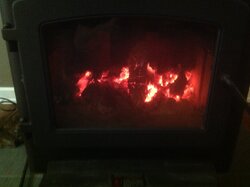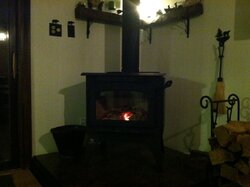Here is a pic of the coals in my englander. I have a fire going for about 3 hours. Air control is about 1/2. Stove top temp is 325. Front of house is 77, back bedroom is a nice 70. It is 34 pout side, cold and mixed rain and snow outside.
Is this a good time to reload the stove?
I have noticed a decent amount of creosote at the top of my chimney, not clogging the grates. But a decent discoloring of black.
My wood is not great but I am substituting with pallets and dimensional wood. I have never had a fire smolder out, but the wood hisses and pisses, but I usually don't add it until stove reaches 450.
Is this a good method? Do you need more info to answer?
Is this a good time to reload the stove?
I have noticed a decent amount of creosote at the top of my chimney, not clogging the grates. But a decent discoloring of black.
My wood is not great but I am substituting with pallets and dimensional wood. I have never had a fire smolder out, but the wood hisses and pisses, but I usually don't add it until stove reaches 450.
Is this a good method? Do you need more info to answer?



 , I'd add more now...
, I'd add more now...
 Risk of a runaway at that point, no?
Risk of a runaway at that point, no?